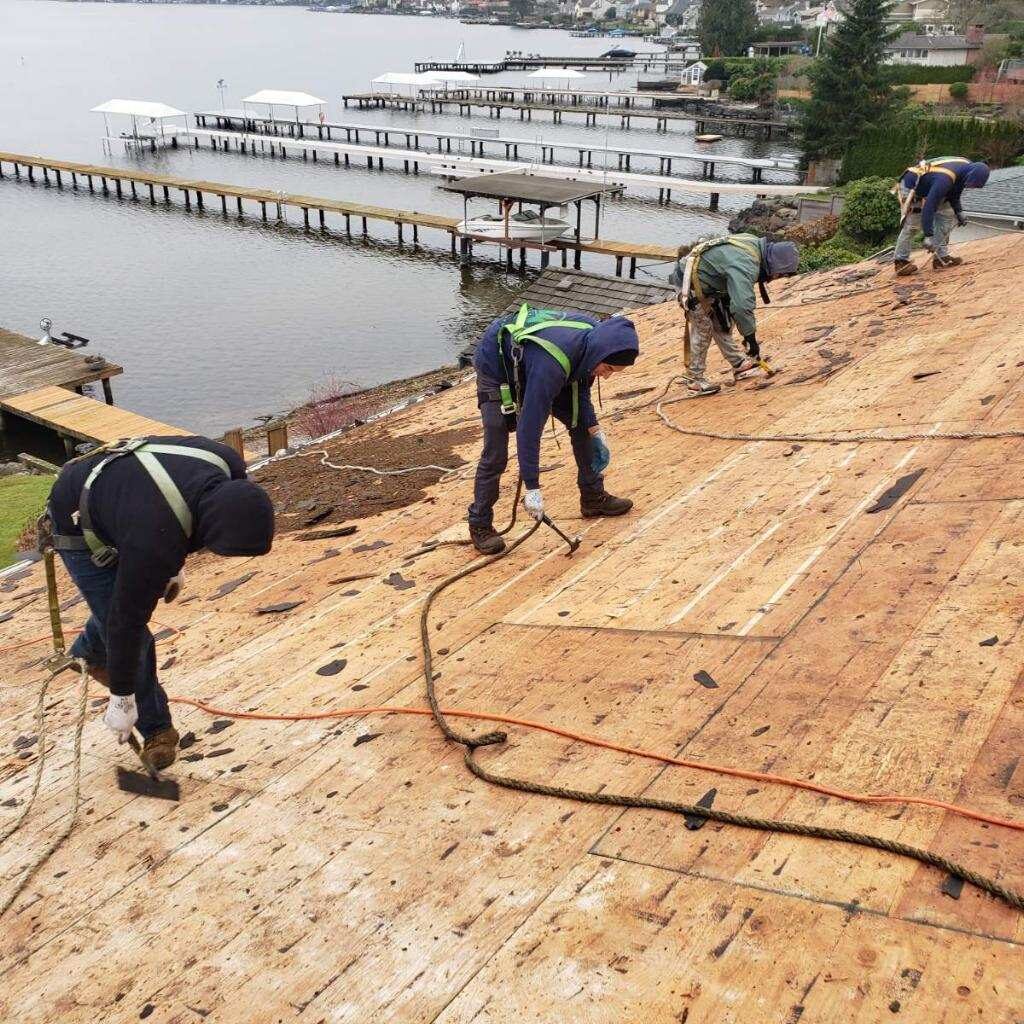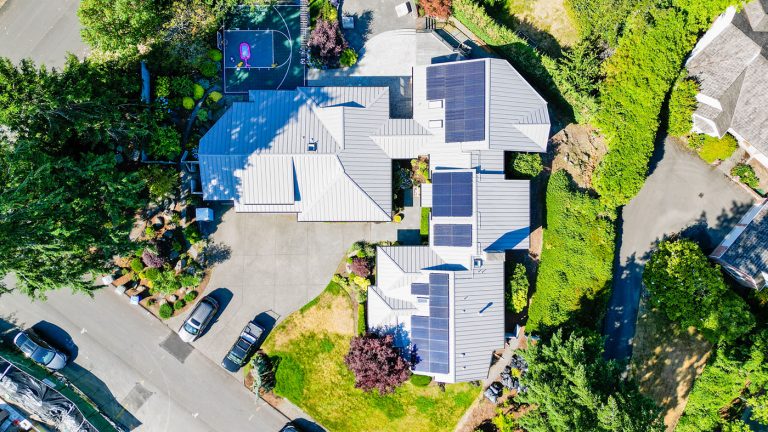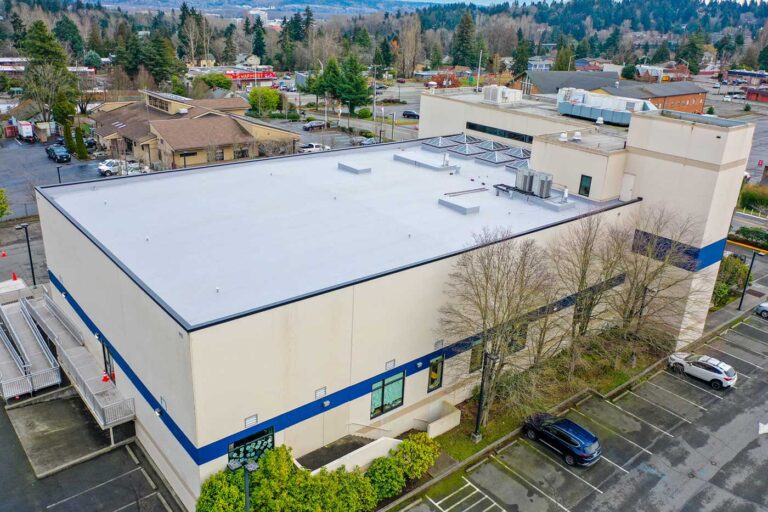Quick Answer to "How to Install Composite Roofing":
Composite roofing shingles are nailed down over a layer of plywood (sheathing) and synthetic water resistant underlayment.

Overview of Composite Roofing Construction
Quality of roofing materials is extremely important when it comes to maximizing the lifetime of composite roofing. High quality workmanship during the installation of composite roofing is just as important. There are many details to consider when installing a roof, including local factors related to the geographic location of the house and the surrounding environment. We are going to focus on the basics of "How to Install Composite Roofing" at a higher level.
Step 1 - Tear off

The first step of the re-roofing process is to tear off the old roof. This involves getting all the old roof materials off of the roof and into a large dumpster. Most of the time this means taking off shingles, any old underlayment, and sheathing (plywood panels). Sometimes there is more than one layer of old roofing. Multiple layers can exist from previous roofers roofing over the old roof instead of replacing the old roof.
Step 2 - Roof Deck Inspection

During this step of the re-roofing process, we start by inspecting the roof deck (sheathing). At this point we look for any damage from insects, wood rot, or anything else that may damage the roof deck. If we end up removing any of the roof deck, we will also inspect the rafters near the damaged roof deck. The rafters are the wood framing that supports the new roof. If we find any damage we replace the damaged wood and replace anything sheathing that needs replacing.
We also look for potential modifications needed to accommodate the new roof. A few examples of roof changes that may require additional modifications can include: adjusting the pitch of the roof, adding skylights, or adding a dormer. If there is any framing or modifications needed, we go ahead and implement those changes.
Step 3 - Installing the New Composite Shingle Roof
The new composite roof consists of a layer of roof sheathing (plywood panels). Next, a synthetic water resistant underlayment. Lastly, composite shingles on top.

The roof sheathing is nailed to the rafters. The layer of sheathing provides strength to the roof, allowing roofers to walk on the roof and place tools or roofing materials on top of the sheathing.
Once all the sheathing is attached to the rafters, we add the synthetic water resistant underlayment. This underlayment acts as a water resistant layer beneath the shingles and helps protect the sheathing and house below. Modern underlayment is designed to resist moisture related expansion. Moisture related expansion can lead to roof wrinkling, a noticeable bump or dip in what should be a flat area of your roof.
Next, the shingles are nailed down over the synthetic water resistant underlayment and sheathing. Each row of shingles overlaps the previous row. The edges and seems of the roof are placed and nailed down as a last step. This outer layer of composite shingles provide protection from water and snow melt as water flows down the roof.
Composite Roofing Shingle Manufacturers
There are two major composite roofing shingle manufacturers from whom we source our composite roofing shingles: CertainTeed and Malarkey Roofing Products.
CertainTeed
CertainTeed has been North America's leading brand of exterior and interior building products since 1904. They have helped shape our world - roofs being one example that can be found on almost any home! As an American company founded back then as General Roofing Manufacturing Company (1904), today’s headquartered enterprise knows how to produce quality goods with sustainability at its core: insulation; siding/fences and more.
Malarkey Roofing Products
Malarkey Roofing Products has been a family-owned company since 1956. Located across the country from Oregon to California with an additional location for Oklahoma, they're committed in providing high quality asphalt or fiberglass shingle options that will work well on your next composite roofing project - no matter how big it might be!
Three Tree Roofing is Composite Roofing Manufacturer Certified
We have gone through extensive training with each manufacturer. This included comprehensive background checks and audits. Through these processes, we earned manufacturer certifications from our roofing material suppliers. In addition to the Three Tree Roofing Warranty, our customers receive a manufacturer backed warranty. This includes all of our workmanship. You are double covered by us and by the manufacturer!
Certified Roofer
We hope this article helps you better understand how composite roofing is installed. Click here to see our next post "How long does composite roofing last?" - Part 4 of our 8 Part series on "5 Different Types of Roofs: Composite Roofing".






